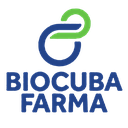Executive Secretary

10th International Scientific Conference on Agricultural Development and Sustainability
16th Symposium of Plant Protection

Abstract
Problematic: it is necessary to obtain pure cultures of pathogenic fungi to evaluate resistance of sugarcane cultivars against diseases.
Objective: characterize the biological process of Colletotrichum falcatum in PDA culture medium.
Methodology: a study was established in the phytopathology laboratory of the Camagüey Sugarcane Research Institute, located in the Florida municipality, at the geographic coordinates 21º 31' North Latitude and 78º 04' West Longitude at 57.08 masl. The study period was between November 2022 and January 2023. The inoculum was obtained from the highly susceptible cultivar C137-81. Homogeneous portions were taken from the mother culture and plates containing PDA medium were inoculated. The variables analyzed were the duration of the latency phase, from observations every two hours, variations in the diameter of the colonies, growth rate, formation of acervuli and conidial masses, length and width of the conidia. The images were processed using the Adobe Photoshop processor.
Results and discussion: good development of the fungus was observed on the PDA medium.
Conclusions: The PDA medium is suitable for the growth and development of the pathogen and to obtain pure cultures for the inoculation of cultivars obtained by the improvement process and to determine their level of resistance to the disease.
Resumen
Problemática: es necesario la obtención de cultivos puros de hongos patógenos para evaluar resistencia de cultivares de caña frente a las enfermedades.
Objetivo: caracterizar el proceso biológico de Colletotrichum falcatum en medio de cultivo PDA.
Metodología: se estableció un estudio en el laboratorio de fitopatología del Instituto de Investigaciones de la Caña de Azúcar de Camagüey, situada en el municipio Florida, en las coordenadas geográficas 21º 31' de Latitud Norte y los 78º 04' de Longitud Oeste a 57,08 msnm. El periodo de estudio estuvo comprendido entre noviembre 2022 y enero 2023. El inóculo se obtuvo a partir del cultivar altamente susceptible C137-81. A partir del cultivo madre se tomaron porciones homogéneas y se inocularon placas que contenían medio PDA. Las variables analizadas fueron duración de la fase de latencia, a partir de observaciones cada dos horas, variaciones del diámetro de las colonias, tasa de crecimiento, formación de acérvulos y de masas conidiales, largo y ancho de los conidios. Las imágenes se procesaron mediante el procesador Adobe Photoshop.
Resultados y discusión: se apreció buen desarrollo del hongo sobre el medio PDA.
Conclusiones: el medio PDA es idóneo para el crecimiento y desarrollo del patógeno y obtener cultivos puros para la inoculación de cultivares obtenidos por el proceso de mejora y determinar el nivel de resistencia de estos ante la enfermedad.
About The Speaker

Ing. Ivia Dalmis Pouza Sierra

Discussion

